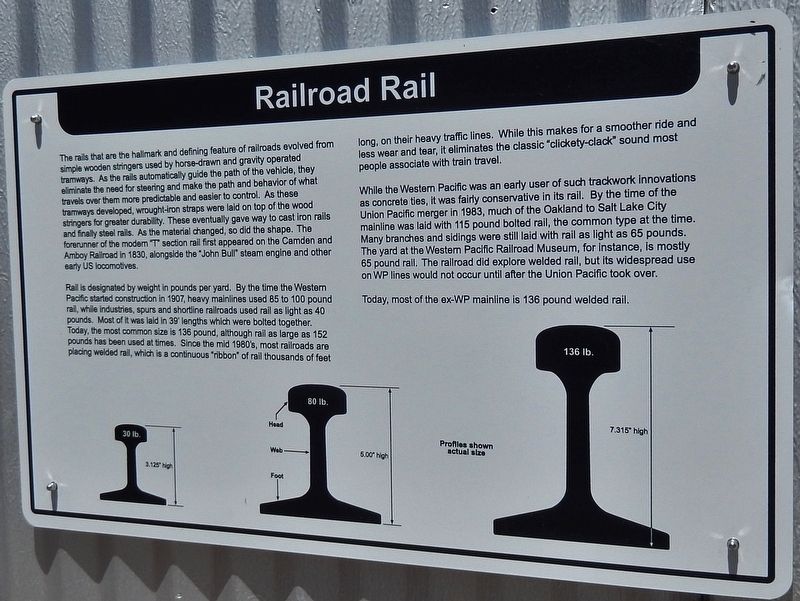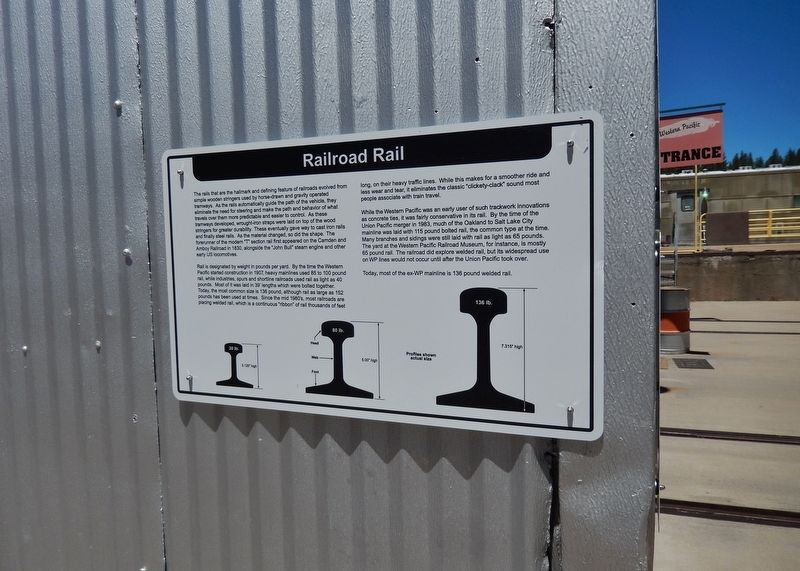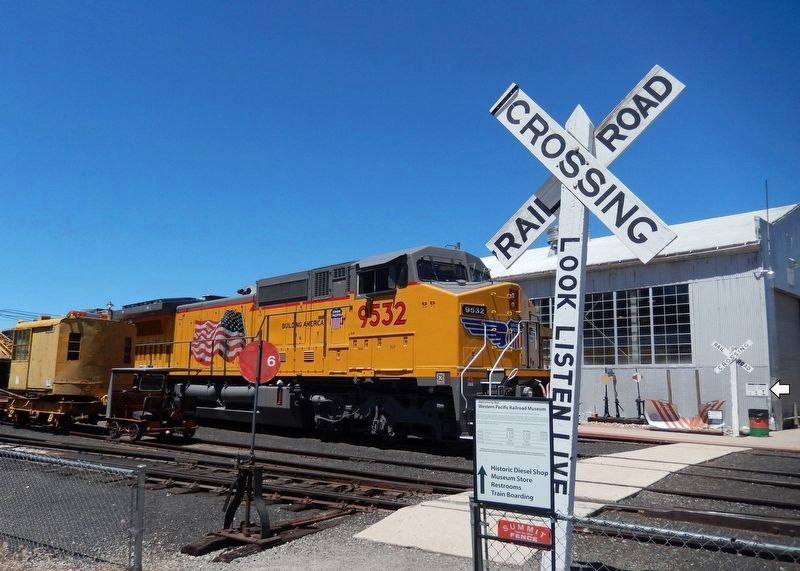Portola in Plumas County, California — The American West (Pacific Coastal)
Railroad Rail
Rail is designated by weight in pounds per yard. By the time the Western Pacific started construction in 1907, heavy mainlines used 85 to 100 pound rail, while industries, spurs and shortline railroads used rail as light as 40 pounds. Most of it was laid in 39' lengths which were bolted together. Today, the most common size is 136 pound, although rail as large as 152 pounds has been used at times. Since the mid 1980's, most railroads are placing welded rail, which is a continuous “ribbon” of rail thousands of feet long, on their heavy traffic lines. While this makes for a smoother ride and less wear and tear, it eliminates the classic "clickety-clack" sound most people associate with train travel.
While the Western Pacific was an early user of such trackwork innovations as concrete ties, it was fairly conservative in its rail. By the time of the Union Pacific merger in 1983, much of the Oakland to Salt Lake City mainline was laid with 115 pound bolted rail, the common type at the time. Many branches and sidings were still laid with rail as light as 65 pounds. The yard at the Western Pacific Railroad Museum, for instance, is mostly 65 pound rail. The railroad did explore welded rail, but its widespread use on WP lines would not occur until after the Union Pacific took over.
Today, most of the ex-WP mainline is 136 pound welded rail.
Erected by Western Pacific Railroad Museum.
Topics. This historical marker is listed in this topic list: Railroads & Streetcars.
Location. 39° 48.236′ N, 120° 28.551′ W. Marker is in Portola, California, in Plumas County. Marker can be reached from Western Pacific Way, ¼ mile west of Main Street. Marker is mounted at eye-level at the southeast corner of the Western Pacific Railroad Museum building. Touch for map. Marker is at or near this postal address: 700 Western Pacific Way, Portola CA 96122, United States of America. Touch for directions.
Other nearby markers. At least 8 other markers are within walking distance of this marker. Western Pacific Railroad History (here, next to this marker); Pullman Company 8300 (a few steps from this marker); Western Pacific Railroad 6424 (within shouting distance of this marker); Union Pacific Railroad 6946 (within shouting distance of this marker); Western Pacific 106 "Charles O. Sweetwood" (within shouting distance of this marker); Southern Pacific Railroad MW208 (within shouting distance of this marker); Western Pacific Railroad 501 (within shouting distance of this marker); Western Pacific Railroad 484 (about 300 feet away, measured in a direct line). Touch for a list and map of all markers in Portola.
Also see . . . Rail Profile (Wikipedia). In May 1831, the first flanged T rail (also called "T-section") arrived in America from Britain and was laid into the Pennsylvania Railroad by Camden and Amboy Railroad. They were also used by Charles Vignoles in Britain. The first steel rails were made in 1857 by Robert Forester Mushet, who laid them at Derby station in England. Steel is a much stronger material, which steadily replaced iron for use on railway rail and allowed much longer lengths of rails to be rolled. (Submitted on December 25, 2020, by Cosmos Mariner of Cape Canaveral, Florida.)
Credits. This page was last revised on December 27, 2020. It was originally submitted on December 25, 2020, by Cosmos Mariner of Cape Canaveral, Florida. This page has been viewed 129 times since then and 20 times this year. Photos: 1, 2, 3. submitted on December 25, 2020, by Cosmos Mariner of Cape Canaveral, Florida.


